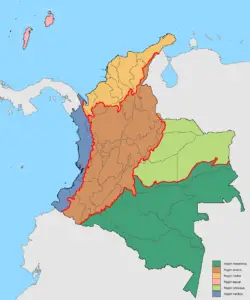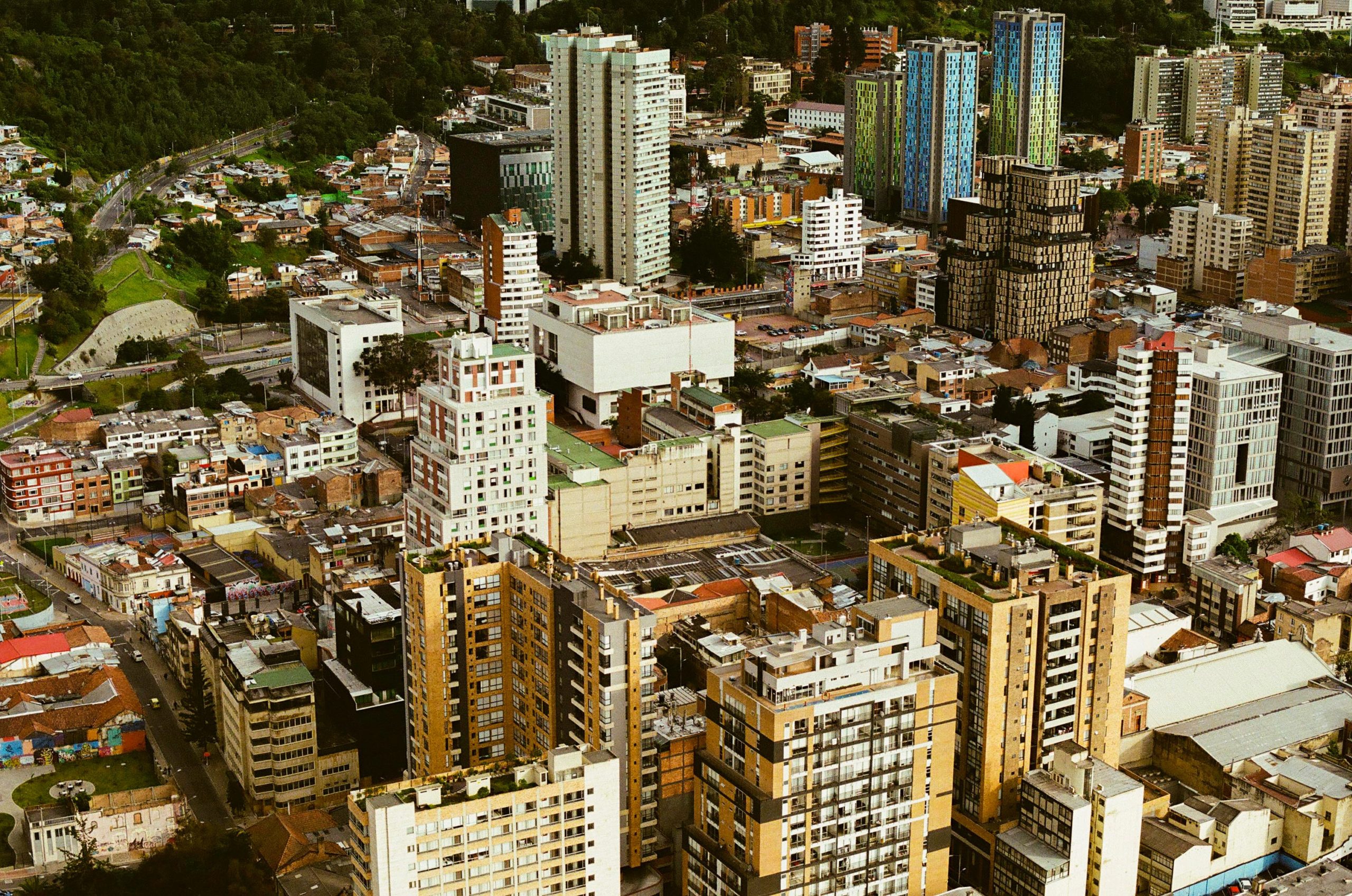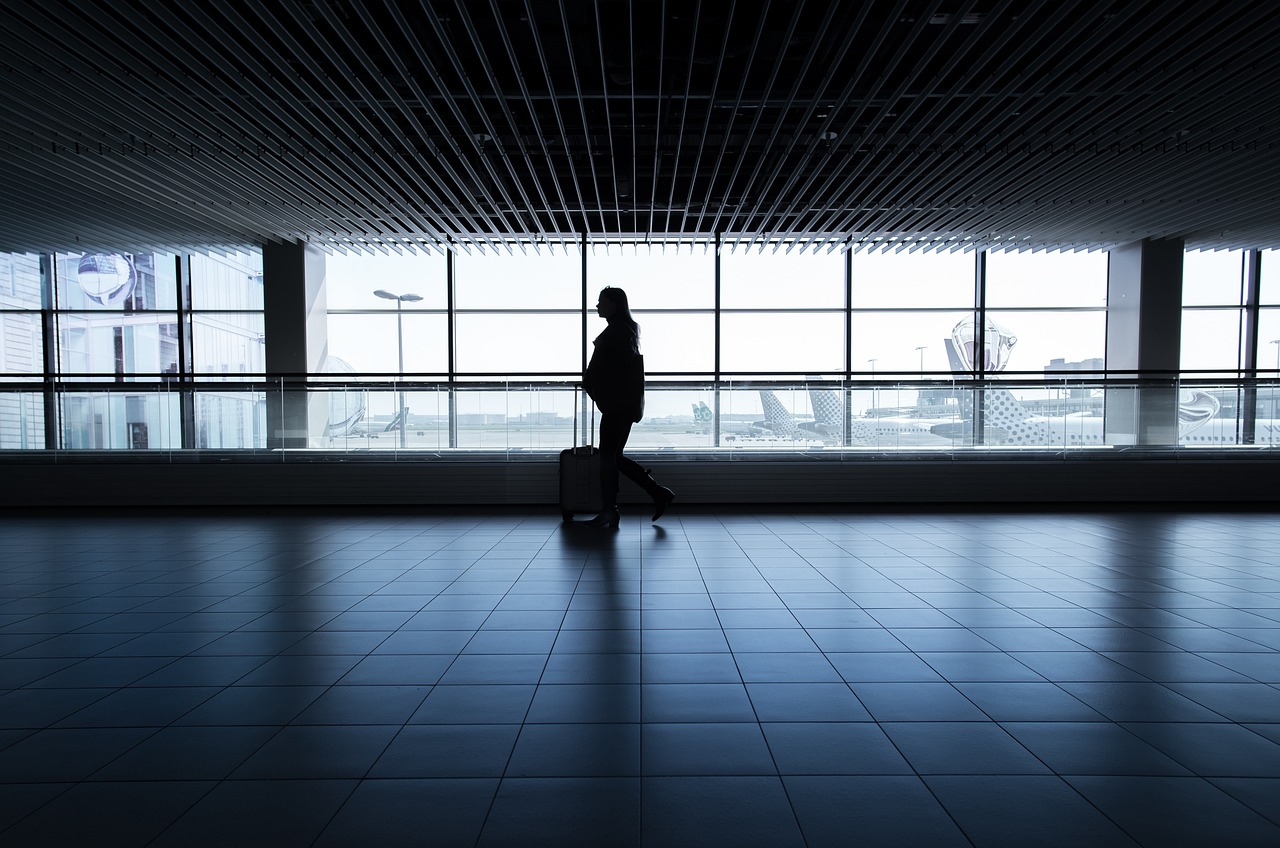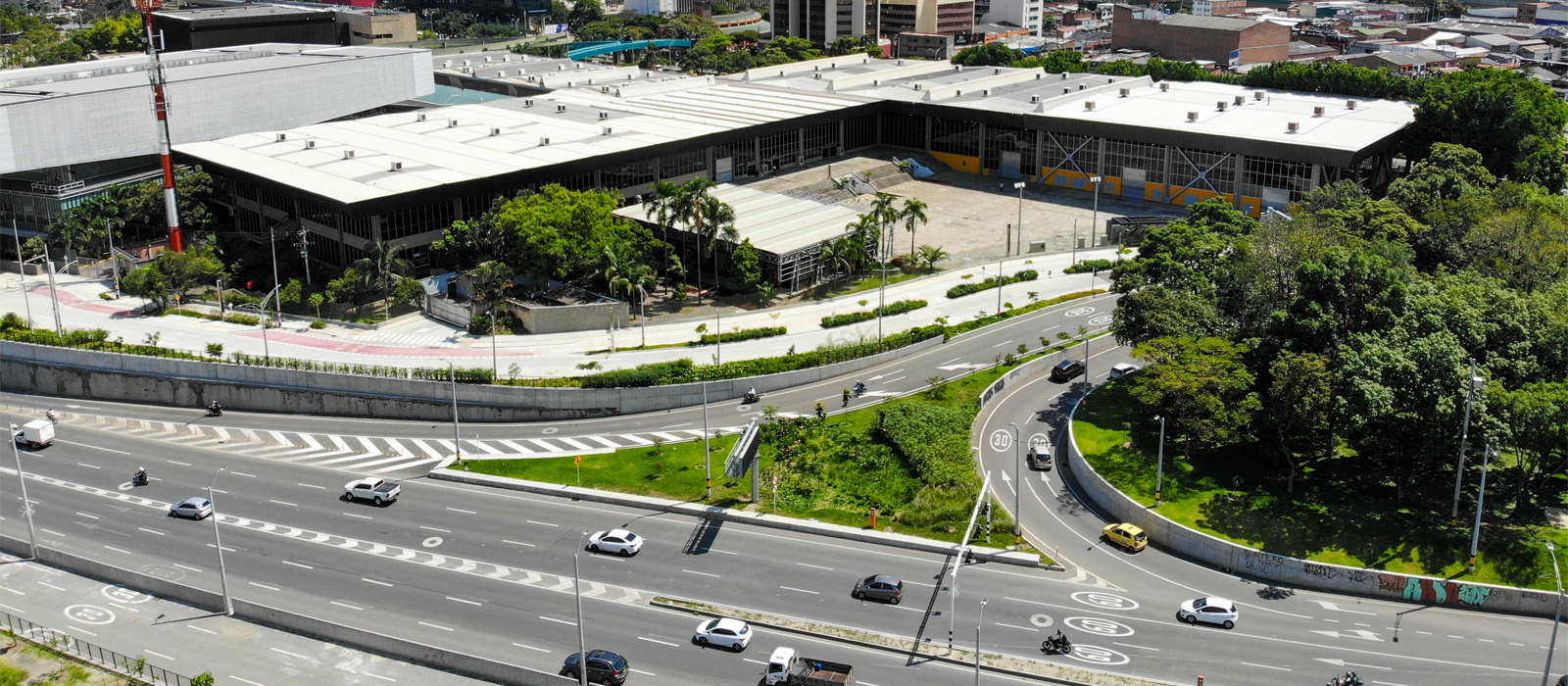Colombia-MICE is part of the Pelecanus Travel Group. We are located in Bogota, Colombia. We are specialized in corporate travel and all services around Meetings, Incentives, Conferences, and Exhibitions.
Ports have an impact on the economy and globalization of any country, as they mainly serve as entry and exit channels for all types of products, thus ensuring trade relations with the rest of the world countries.
Several port areas exist in Colombia, such as the ports of: Santa Marta, Barranquilla, Cartagena, Buenaventura and Tumaco.
Port of Cartagena
Located in the city’s bay known as “La Heroica “, the Cartagena Group port is the Caribbean’s most important logistics platform. Thanks to its strategic location, it is an important point for international trade.
Currently, this is the country’s top export port as more than 60% of trade with the United States passes through this port. On the other hand, it is connected to 750 other ports in around 150 countries around the world and serves 25 shipping lines.
The main goal of the Port of Cartagena Group is to facilitate Colombia’s foreign trade and global connectivity in order to promote the socio-economic development of the region and the country. This goal is achieved thanks to the advanced infrastructure, cutting-edge technology, high safety standards and excellent staff training.
Port of Cartagena group services
- Maritime services: loading and unloading; supply of drinking water and fuel; bilge and refuse disposal and treatment; Berths for cargo ships, cruise ships and smaller vessels; Possibility to moor ships up to 16,000 TEU.
- Freight services: container, refrigerated cargo, autoload, general cargo, IMO cargo.
- Logistics services: warehousing, nationalization of cargo, preparation for onward shipment and international distribution, sending of reports, stamping and serialization.
- Cruise ship services: ship handling, passenger handling and embarkation.
Domestic transport times from the port of Cartagena
The transportation time from Cartagena is about 2-3 days to the interior ( Bogota, Medellin, Cali) and 3-4 days to the south of the country. This is under normal transit conditions (ie no detours, no obstructions on the route affecting vehicle traffic).
Container transport rate
The average cost of transporting a 20-foot container from the port of Cartagena to Bogotá in 2022 is: 5,216,269 million Colombian pesos (COP).
International shipping times
Below are the shipping times of goods from some of the main international ports to the port of Cartagena:
- China: Shanghai (29 days), Hong Kong (31 days)
- Singapore: Singapore (35 days)
- South Korea: Busan (28 days)
- Germany: Hamburg (15 days)
- Belgium: Antwerp (14 days)
- Netherlands: Rotterdam (14 days)
- United States: Los Angeles (10 days), New York (5 days), Georgia (9 days)
Advantages of the Port of Cartagena
- It is on the list of the top 100 container ports.
- It offers port and logistics services not only for cargo ships but also for passengers.
- More than 50 companies and industries are based in the bay which has made it an economic cluster for the Caribbean and the country.
- He specializes in container handling.
- Its sea terminals, SPRC and Contecar, are equipped with the most modern ships and have all the instruments for the arrival of the largest ships in the world.
- He has the infrastructure to handle car transport.
- Management of project loads such as heavy or oversized parts.
- As a logistics center, it creates added value for the freight and offers its customers storage, labeling and repacking options, among other things, depending on their needs.
- 98 percent of the cruise passengers that reach the country arrive here.
Port of Sociedad Portuaria Regional de Buenaventura
The Sociedad Portuaria Regional de Buenaventura port is located on the Colombian Pacific coast, in Buenaventura, Valle del Cauca, near the main sea routes that cross the planet from north to south and from east to west.
The port of Buenaventura is among the ten most important ports for maritime import and export traffic in Latin America and among the most important ports in the country as it is the main seaport for the arrival of goods from all over the country. In Colombia, it is the logistics hub through which most goods are handled, namely around 45% of the country’s international sea freight volume.
It is connected to 300 ports around the world and has 14 docks, a 1050 meter mooring line, a terminal with forklifts, 2 multipurpose terminals and 3 mobile cranes.
This port has an immense impact on the Colombian economy, mainly because of the wide variety of bulk cargoes it receives. In addition, its geographical location makes it one of the most interesting seaports in Colombia for international trade.
Services of the Regional Port Company of Buenaventura
The most important services are as follows:
- Integral security program.
- pilot service.
- Handling, reloading, loading and unloading and packaging.
- towing boats.
- Provision of water, fuel, lubricants and supplies.
- Wharfage, storage, power supply, inspections, weighing.
- Ship Maintenance: Repair of mechanical, electrical, hydraulic and refrigeration systems.
- Medical, dental and migration services for ship crews.
- Storage services for shipping company LCL storage.
- Monitoring and control of transshipment containers.
- Consolidation and deconsolidation of LCL containers.
- Treatment of solid and liquid waste.
- use of cranes.
Domestic transport times from the Sociedad Portuaria Regional de Buenaventura.
Shipping time from the port of Buenaventura is approximately one day (Cali) to two days (Bogota, Medellin). This occurs under normal transit conditions (ie no detours, no obstructions on the route affecting vehicular traffic).
container transport rate
The average cost of transporting a 20-foot container from the port of Buenaventura to Bogotá in 2022 is 5,920,097 million Colombian pesos (COP).
International shipping times
Below are the shipping times of goods from some of the main international ports to the port of Buenaventura:
- China: Shanghai (29 days), Hong Kong (31 days)
- Singapore: Singapore (34 days)
- South Korea: Busan (27 days)
- Germany: Hamburg (18 days)
- Belgium: Antwerp (17 days)
- Netherlands: Rotterdam (17 days)
- United States: Los Angeles (9 days), New York (7 days), Georgia (11 days)
Benefits of the Buenaventura Regional Port Company
- The port of Buenaventura has excellent infrastructures such as corridors, warehouses and natural sea basins that facilitate the arrival of ships.
- It is the most important port on the Pacific coast because it is close to the main sea routes that cross the planet from north to south and from east to west.
- It is one of the Latin American ports closest to the Far East, which makes it easier to connect to the Asian market.
- It has a multipurpose capacity for port services near the Panama Canal.
Port of Barranquilla
The port of Barranquilla is located north of the port of Cartagena and close to the capital of the Atlantic, on the west bank of the Magdalena River, 22 km from its confluence with the Caribbean Sea. It is currently the fourth most modern and most important port in the country in terms of transported cargo volume.
It is also known as the Golden Gate of Colombia, as it was through this port that the most innovative and important technological achievements entered the country, such as B. Radio, cinema, television, aviation, railways, river navigation and other things that were possible thanks to its natural features as a city port.
One of the main features of this port is that it can store more than 350,000 barrels of oil and other products from the refineries. In the coming years it is expected to become the port with the largest storage capacity for barrels of crude oil, vegetable oils and other liquid substances.
In addition to the port terminals, 372 companies are operating in various fields such as consulting, warehousing, transport, cargo handling, logistics, etc., creating more than 13,000 jobs.
Barranquilla Port Services
- Container Service: Storage, Reach Stacker, Elevators, Platforms, Telescopic Handler, Container Yard, XPS and N4 Software.
- Logistics platform: storage, distribution, repairs, packaging, picking, deliveries, delivery service, printing, photo documentation.
- Refrigerated and frozen goods: official controls, cross-docking, storage, order picking, palletizing, labeling, stowage, weighing.
- Cargo: sorting of cargo, river handling, land transport, bagging service, CDLI, crate repair, thermopackaging, cleaning, and vehicle maintenance.
- Bulk cargo: bagging, storage, loading ships, pallets, removal of compartments on ships, laboratory, cargo inspection, moisture control equipment.
Domestic times from the Port of Barranquilla
The transportation time from Barranquilla Port is about 2-3 days to the interior (Bogota, Medellin, Cali) and 3-4 days to the south of the country. This is under normal transit conditions (ie no detours, no obstructions on the route affecting vehicle traffic).
Container transport rate
The average cost of transporting a 20-foot container from the Port of Barranquilla to the city of Bogotá in 2022 is 5,720,859 million Colombian pesos (COP).
International shipping times
Below are the shipping times for goods from some of the major international ports to the Port of Barranquilla:
- China: Shanghai (29 days), Hong Kong (32 days)
- Singapore: Singapore (35 days)
- South Korea: Busan (28 days)
- Germany: Hamburg (15 days)
- Belgium: Antwerp (14 days)
- Netherlands: Rotterdam (14 days)
- United States: Los Angeles (10 days), New York (5 days), Georgia (9 days)
Barranquilla Port Benefits
- The Port of Barranquilla has the ability and excellent management to expand due to the growing warehousing needs of most of the country’s private and public terminals. This expansion includes the construction of a large coal storage facility for the Barranquilla SPR.
- There is an area exclusively dedicated to separating the coal from the other deposits, to avoid waste and waste of this resource and to prevent possible fires.
- Ease of multimodal transportation, with access to the country’s major trunk roads in less than an hour to move cargo by land and sea.
- Broad portfolio of container routes and shipping companies such as: MAERSK, SeaLand, King Ocean Services, SEABOARD MARINE, Hapag-Lloyd, Hamburg Süd, Cosco Shipping, Evergreen, Ocean Network, Yang Ming, CMA CGM, MARFRET, ZIM, Melfi Marine.
Port of Santa Marta
The port is located at the northwest end of the city of Santa Marta and is bounded by the hills of San Martin to the north and by Cerro Ancon and Taganguilla Bay to the west.
This seaport has many advantages for Colombia, such as: B. its capacity for container transport and storage, as well as a growing cargo activity of fuel, grain and other products such as the traditional palm oil. In addition, it has 7 docks and an exclusive rail freight service that allows unloading and loading of these goods upon their arrival at the port.
The Sociedad Portuaria de Santa Marta is mainly used by shippers who carry out their professional activity on the commercial routes intended for the maritime transport of goods in the Atlantic Ocean.
Santa Marta Port Company Services
- Container terminal: cold rooms, warehouses, storage and operational centers, isolation areas, motor vessel maintenance.
- Bulk terminal: storage, warehouses, mobile crane, suction systems, unloading in silos.
- General cargo terminal: storage, loading and unloading, provision of personnel, equipment rental, provision of ships, loading of motor vessels.
- Liquid terminal: loading and unloading, railcar cleaning, storage, tank and pipe cleaning.
- Coal terminal: loading and unloading, storage, tippers, dampening systems, barriers to control particle dispersion.
- Ro-Ro Terminal: parking, surveillance, wifi, driver availability, loading and unloading service, maintenance, battery charging, transfers.
- Cruise ships.
Shipping times from the Port of Santa Marta
The transportation time from Santa Marta Port is about 2-3 days to the interior (Bogota, Medellin, Cali) and 3-4 days to the south of the country. This is under normal transit conditions (ie no detours, no en route inconveniences or natural situations affecting vehicular traffic).
Container transport rate
The average cost of transporting a 20-foot container from the port of Santa Marta to Bogotá in 2022 is 5,754,006 million Colombian pesos (COP).
International shipping times
Below are the shipping times for goods from some of the major international ports to the Port of Barranquilla:
– China: Shanghai (29 days), Hong Kong (32 days)
– Singapore: Singapore (35 days)
– South Korea: Busan (28 days)
– Germany: Hamburg (15 days)
– Belgium: Antwerp (14 days)
– Netherlands: Rotterdam (14 days)
– United States: Los Angeles (10 days), New York (5 days), Georgia (9 days)
Benefits Port of Santa Marta
- Due to the high volume of bulk cargo in Colombia, this is the third most important seaport in the country.
- It has the best climatic and environmental conditions of any port in the country.
- He works non-stop 24 hours a day.
- This port is the only one on the Atlantic coast served by rail.
- It has an anti-drug police base.
- The Port of Santa Marta has the greatest natural draft (depth) in the country, allowing for the berthing of large and/or heavy vessels.
Tumaco Regional Port Society
This port is located in the municipality of Tumaco in southwestern Colombia, near the border with Ecuador. It is considered the second largest port in Colombia on the Pacific after the port of Buenaventura.
This port is known as the “Pearl of the Pacific” because it is a major port on the Pacific Ocean and is close to its maritime landscapes such as Cabo Manglares, Tumaco Bay and Isla del Gallo to name a few.
It has facilities specially designed to receive enormous quantities of liquid and dry bulk goods, and its main activities include the enormous oil exports abroad, as well as the export of crude oil and bananas.
Sociedad Portuaria Regional de Tumaco Services
- Cargo handling: loading and unloading of general cargo and liquid bulk cargo in sea transport, land transport, loading and unloading ashore, filling and emptying of containers, stowage and unloading, lashing, unlashing, inspection and classification of cargo.
- Trained personnel for piloting, lashing and unloading cargo.
- Boat and towing services, transport services depending on the type of cargo.
- Maritime and port security.
Sociedad Portuaria Regional de Tumaco
International shipping times
Below are the shipping times of goods from some of the main international ports to the port of Tumaco :
- China: Shanghai (29 days), Hong Kong (31 days)
- Singapore: Singapore (34 days)
- South Korea: Busan (27 days)
- Germany: Hamburg (18 days)
- Belgium: Antwerp (17 days)
- Netherlands: Rotterdam (14 days)
- United States: Los Angeles (9 days), New York (7 days), Georgia (11 days)
Benefits of the Sociedad Portuaria Regional de Tumaco
- The Sociedad Portuaria Regional de Tumaco has good connections to the country’s major cities, such as Cali and Bogota.
- It is a port with growing commercial activity and technology.
- Optimal infrastructures for the storage of different materials.
- It creates thousands of jobs.
- It has the greatest tax advantages that any coastal community can have anywhere on the Pacific Rim.
Colombia has a large number of ports and companies in charge of the logistics processes of all types of traders. We hope you found this information useful and if you need advice or have any questions, please contact us. We’re here to help.









